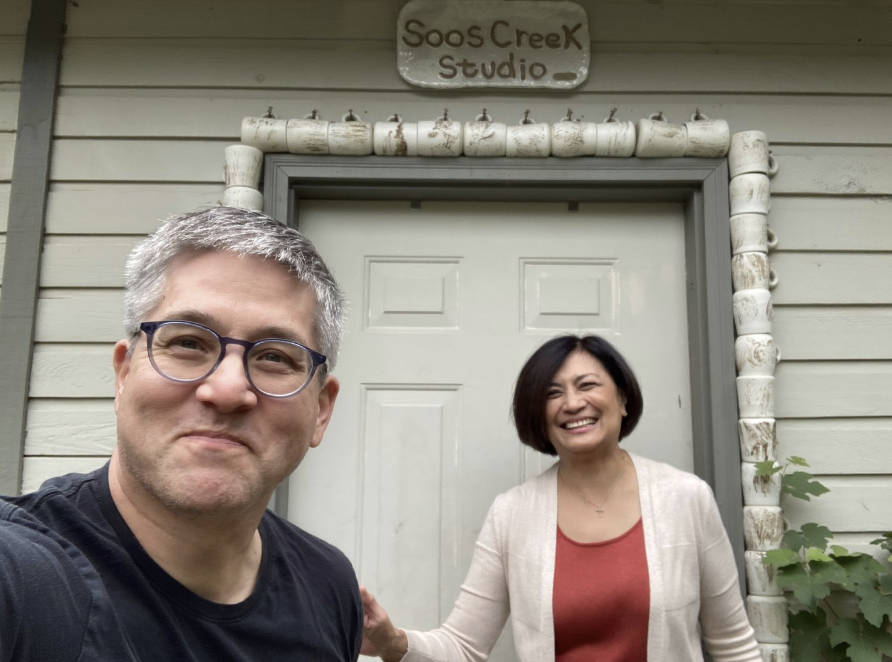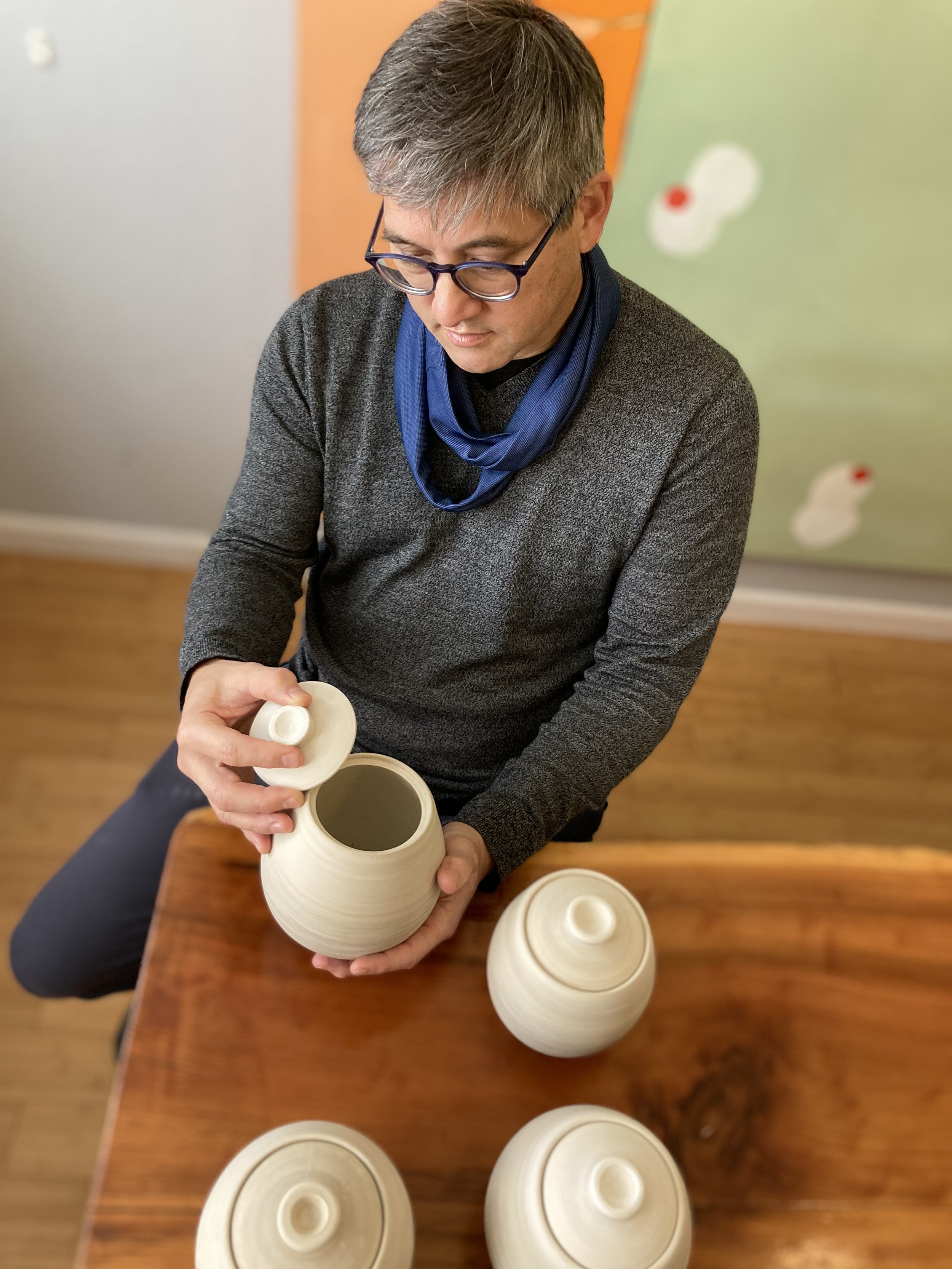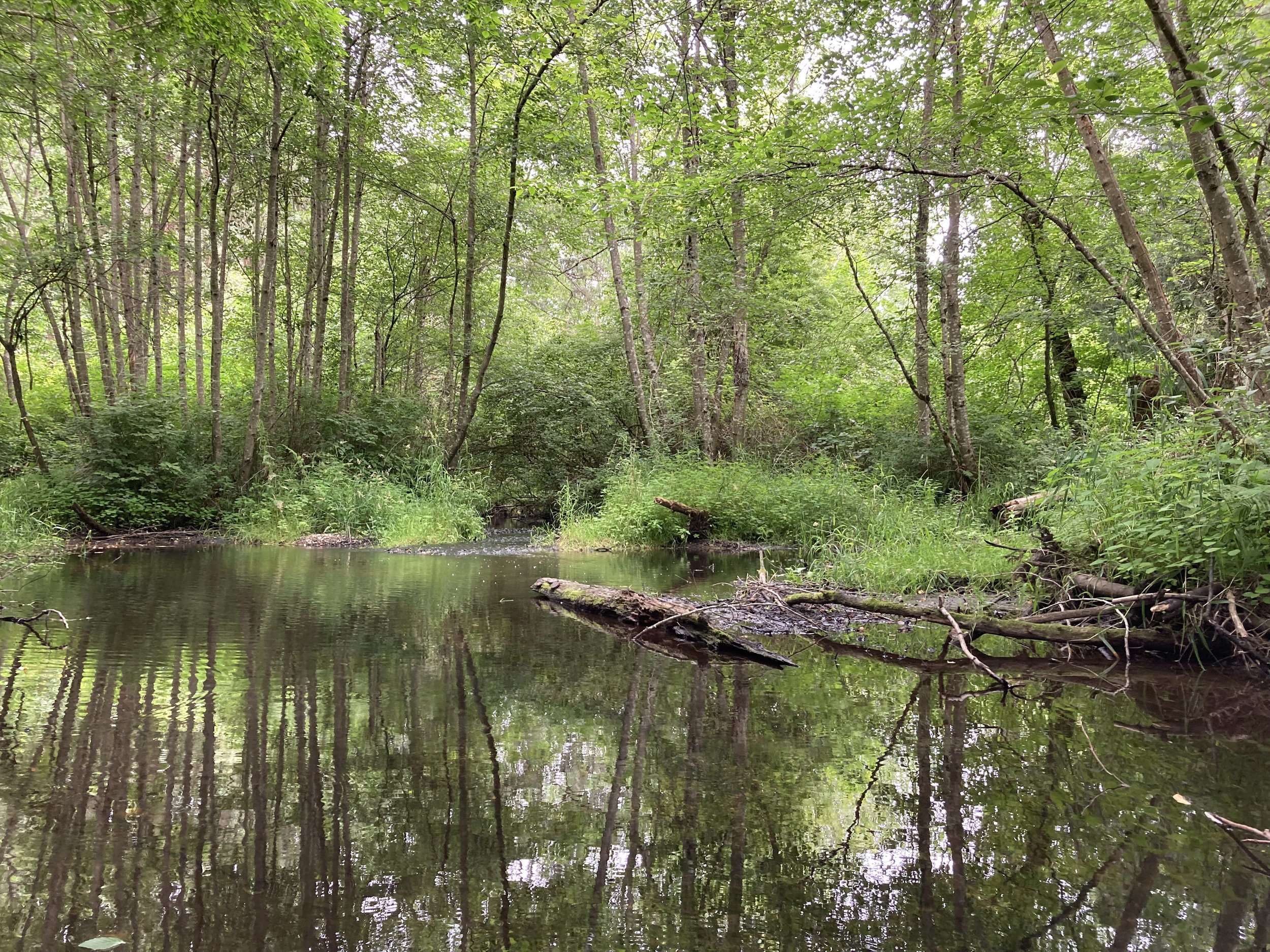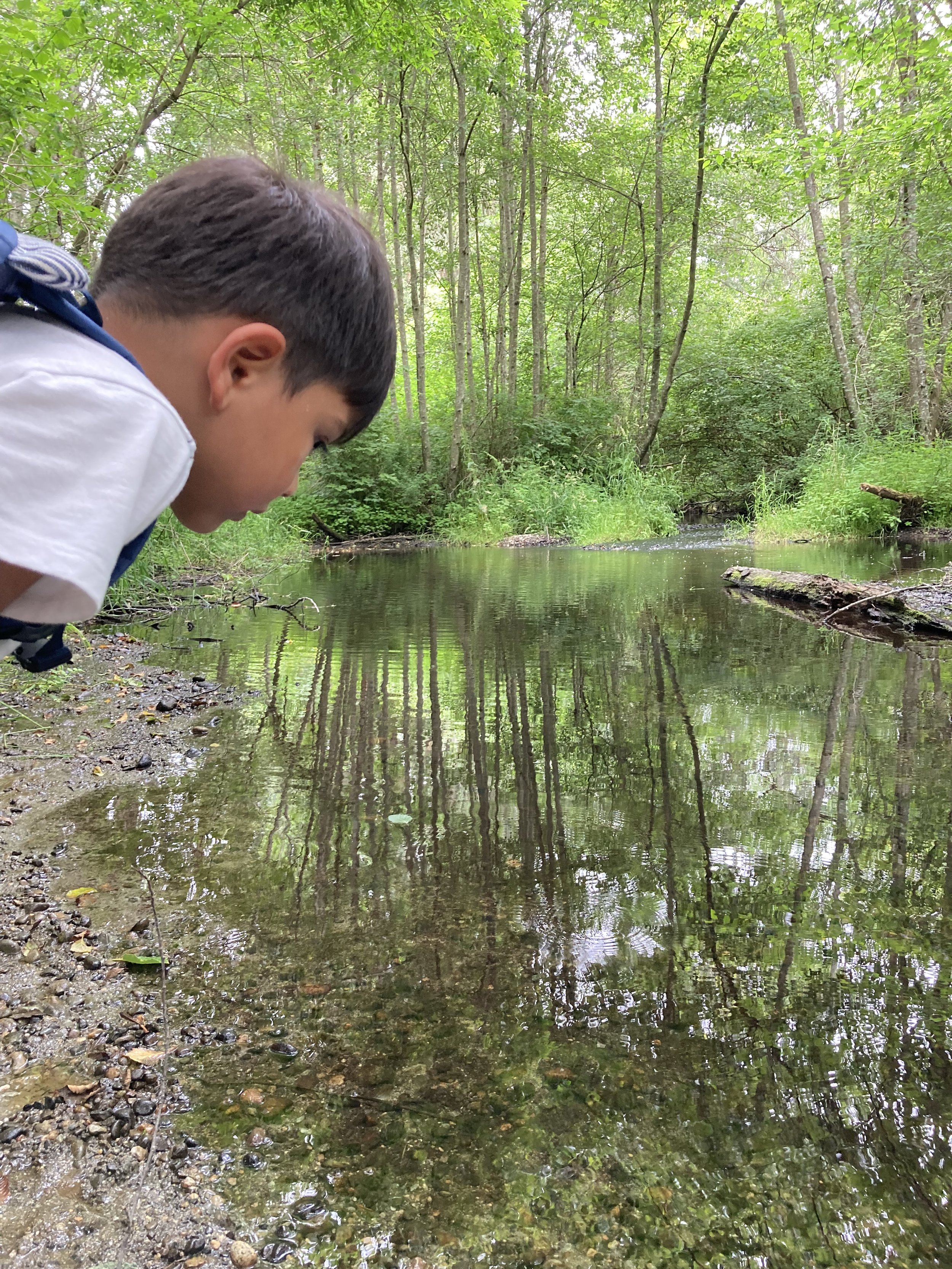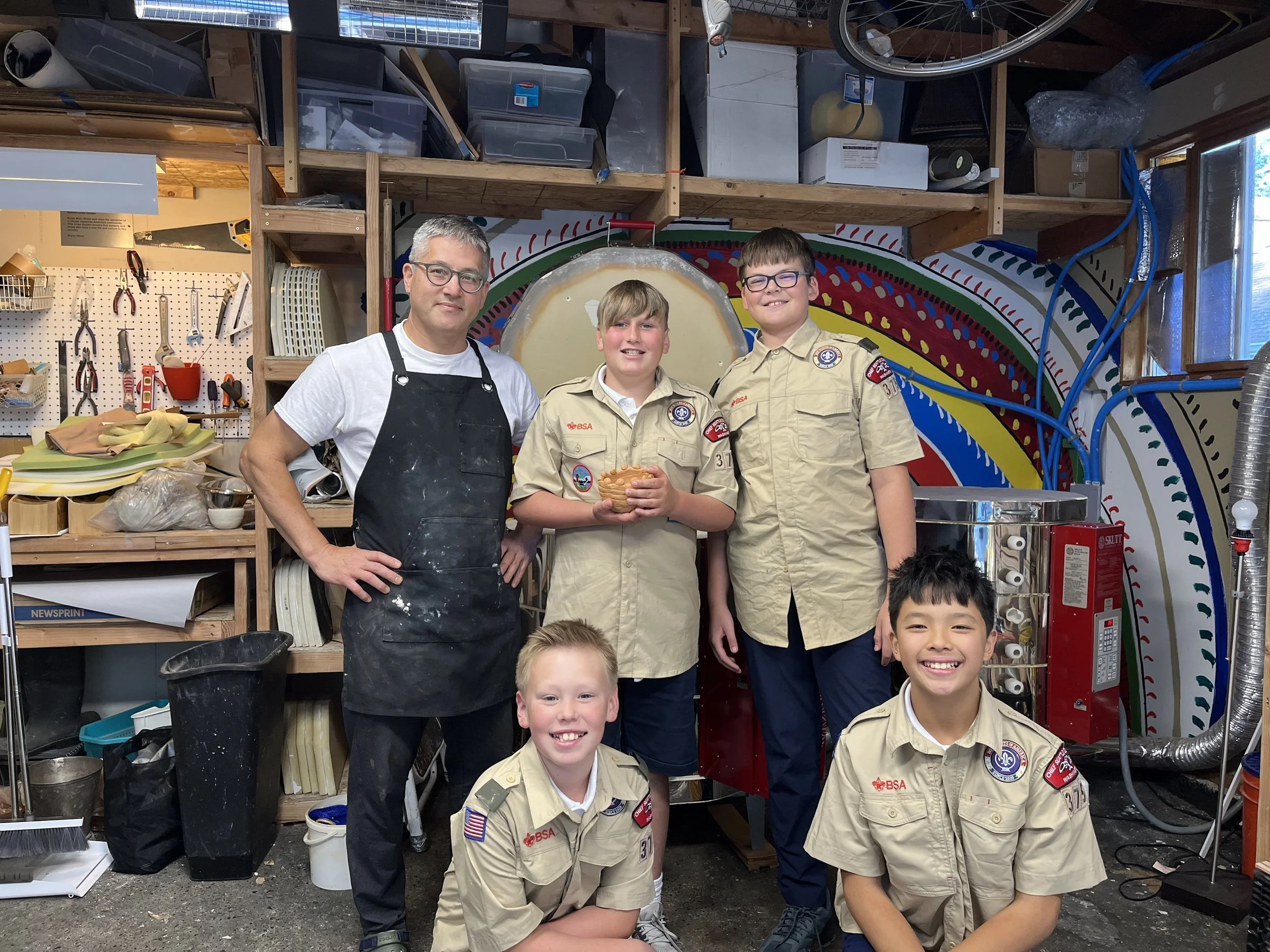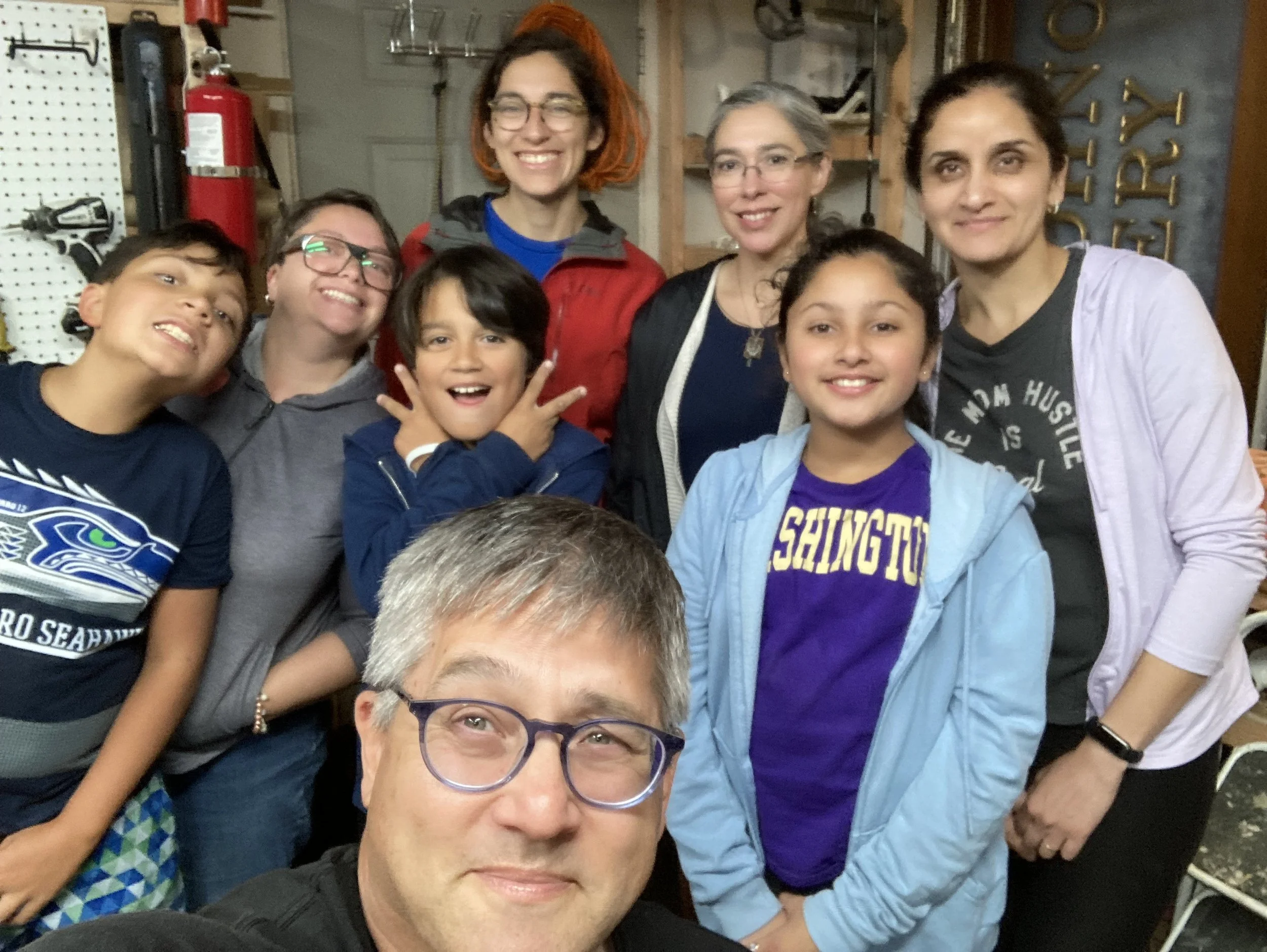The Down to Earth Approach
On a warm sunny day, a few springs ago, we were playing with our twin grandchildren under a tall Douglas Fir tree. We gathered the cones and piled them up into a mound. They ran around the yard and gathered as many as they could. They shared and laughed with joy. We were saying to ourselves, “This is beautiful, sharing and making things together, how splendid.” So we decided to get a bucket to put the cones in for another occasion to play in the house. Boy, did everything turned upside down after that. Somehow the minute the cones left the earth, the act of going into a basket transformed them into a commodity. The sentiment of, “here you go,” switched to, “It’s mine.” What happened here? Is this the innate trait within all of us? It must be. How else can you explain a one year old who can barely utter words, can so distinctively switch into these modes of behavior? Our immediate thought was to put everything back on the ground, and so we did. The fight stopped. When we feel connected to mother earth, could our visceral nature be is to share? Is this is our natural state? The other is our fear playing tricks with us?
Doing pottery to us is keeping that gate way open to reground ourselves frequently. It enables us not to forget the virtue of sharing.
This is why we do pottery.
Co-founders
Bryan & Junsen Ohno
About the potter
Bryan Ohno
Bryan Ohno is the co-founder of Soos Creek Studio, a ceramic studio in the City of Kent. The studio creates sustainable-use pottery and trains youth to be the next generation of potters in the community. He also ran two fine art galleries in Tokyo and Seattle and was the founding director of MadArt.
Bryan was instrumental in advancing Dale Chihuly’s presence in the Asian art world. His experiences also include museum development of the Museum of Glass in Tacoma, Daiichi Museum in Japan and the Singapore National Art Museum. He has also been involved with parks/public art activation such as Flying Freeway, Cube Gardens with the Seattle Parks and Recreation and the Spiral project with the Bill & Melinda Gates Foundation.
He received his Bachelor of Fine Art from the University of Puget Sound. He serves as a board member for 4Culture and the Kent Arts Commission.
Soos Creek
The studio is located near the Big Soos Creek in Kent, Washington. The creek’s name comes from the Skopamish Indian, “the people of the variable streams,” a village that once existed here. Today, the legacy is appreciated through the Soos Creek Trail that offers a tranquil moment of wild life and nature. The work is inspired from the long walks and conversations with folks who visit here from all around the world.
The Artful Path
Bryan Ohno’s ceramics is staged by his background in a multi-faceted career in the art world. He ran two fine art galleries in Tokyo and in Seattle from 1989 to 2019 right up until the Covid19 pandemic. During his gallery years, hundreds of exhibits from solo, group, gallery and museum exhibits were curated by him. Ohno would say, “When I was in my twenties just starting out, all the artist were twice my age, older and famous. Three decades later, I am now on the other side.” He worked with artist from Noguchi, Chihuly, Benglis, Paley, Ohira and Koie. But his interest in ceramics never went away. It began at University of Puget Sound in Tacoma, Washington where he learned the traditions of the American studio movement under the influence of the legendary F. Carlton Ball ceramic culture. There he earned his BA in fine arts. As a young potter, he worked at Orcas Island Pottery living in a Teepee on the beach in the early days. He recalls, “After a full day at work making pottery, I would cook myself a meal in the Teepee most of the time without smoking up the inside, then I would go out sit down in the sand against a log with a cup of tea watching the continuous changing colors of the setting sun. That was a perfect day living in the Pacific Northwest.”
Gallery location at the International District, Seattle, WA. Exhibit: Adrianne Smits, painter, 2013
Gallery location at Pioneer Square, Seattle, WA Exhibit: Isamu Noguchi, sculpture, 1999
His aesthetics are largely influenced by his upbringing from Japan. “I moved to Japan when I was 6. My Japanese father said the only way you are going to truly learn the culture is to attend Japanese public schools. There I was an outsider, but I learned so much. Maybe even more, because things were so unique and different.”
Half way through his gallery career, Ohno began experimenting with socially engaged public art projects. “What does it look like if you took out the single entity of an artist and work on a project collectively as a group? It is diametrically different from what I do at the gallery where I promote one artist.” With this in mind, large outdoor, temporary art projects were created. Using a common theme like a, “spiral,” “kites,” or “gardens as the creative subject. Instead of a singular artist vision, the creative domain transformed into a collective vision. The joy is much greater when the ownership is defused and not singular.” Funding came from the grants from the Seattle Parks and Recreation and the Bill & Melinda Gates Foundation. As many as 250 participants would help create a 350 foot wooden branch spiral sculpture at Lake Union park in Seattle.
The Spiral Art Project, Lake Union Park, Seattle, WA, 2012
As public art projects increased, it became a natural extension for Ohno to host creativity-sparking workshops, later called, ArtRefresh. They were conducted both in English and Japanese and with groups as large as 350 people in these events. “The essence to stoking creativity are two things; Giving oneself the permission to play and the other not knowing how things will end. You suspend your judgment, and let yourself float in the possibilities. This state fuels adaptation of the mind to discover and a path to creativity,” he would later say. The workshops were very improvisational in nature with a goal of going deeper into child like state of play. MBA programs and other high-tech firms showed interest in this new kind of human development. The structure of business and academia are often imbued with structure, formality and linear thinking. The artistic creativity that thrives in non-linear environments offered a contrast and spark to their thinking. Ohno’s goals were to create environments where young minds can explore and imagine within their own unique circumstances.
Seattle University, Albers School of Business, MBA, Think like an Artist Training series, 2016
ArtRefresh workshop, Osaka, Japan 2019
This is where he felt creating a ceramic industry of pottery in his home town in Kent, WA could be his next artistic endeavor. Fusing pottery with food, especially food we call, “home food,” cooked in earthenware. Every culture has their own. “Meals are made by hand, then why not serve it on hand made pottery? Truly it is more enjoyable this way, isn’t it?” He was about to learn a lesson from two year old toddlers.
The return to ceramics came from an unexpected moment when he witnessed his twin grand children prefer the hand pinched bowl over the plastic. The texture, weight and form was more agreeable to them. Ohno would say, when I fly 30,000 feet in the air in a jet, I want the precision machine, but the closer it is to me, I want things hand created and more human like. We are not made of straight lines, flat surfaces or perfect symmetry. None of that exists in nature. That’s what makes us real. Ceramics embodies all aspects of wild and human nature. It brings me closer to nature and perhaps more importantly, being part of nature. It reminds him of his early days in college when he discovered Isamu Noguchi’s work, a sculptor who had similar cultural and mixed race up bringing. Noguchi once said, “It is my desire to view nature through nature’s eyes, and to ignore man as an object for special veneration. There must be unthought-of heights of beauty to which sculpture may be raised by this reversal of attitude.” Ohno would later curate two solo exhibitions of the artist at his gallery.
